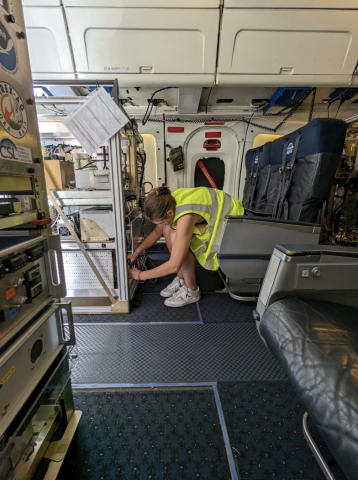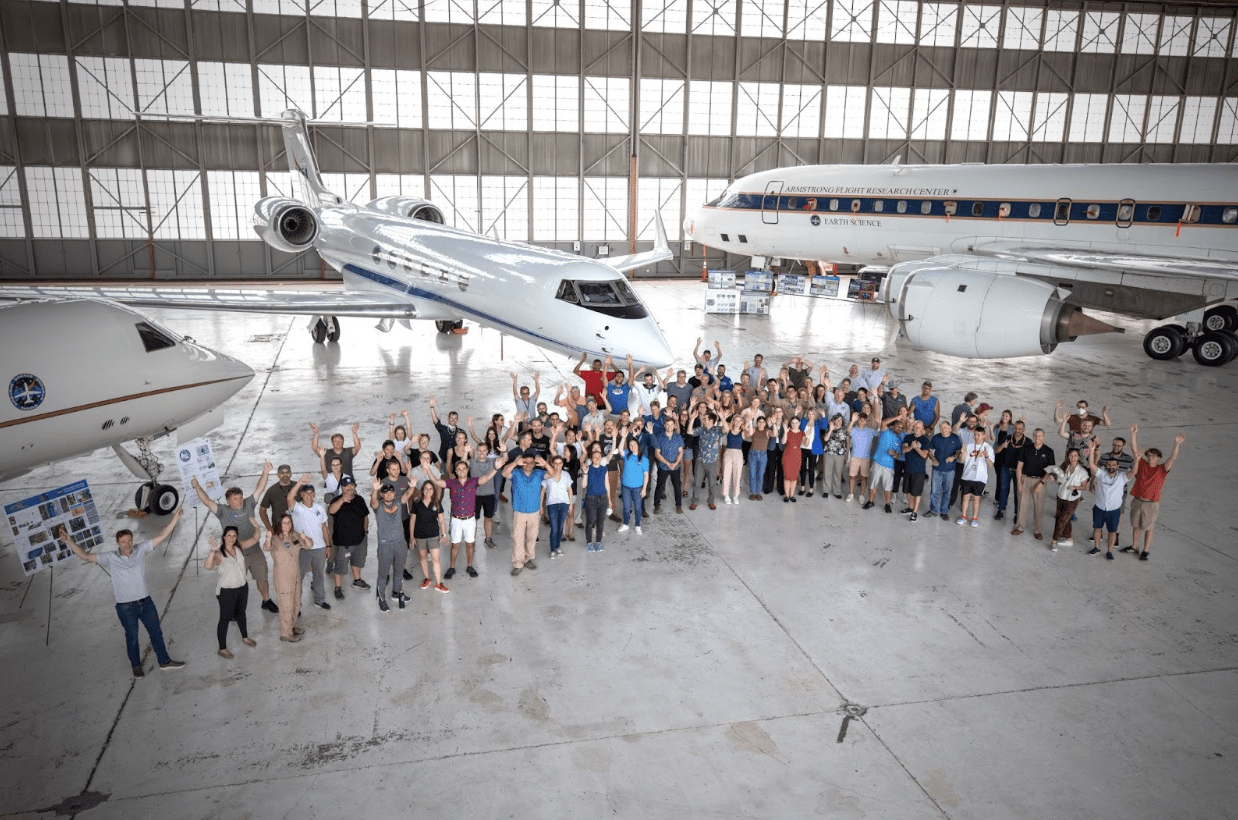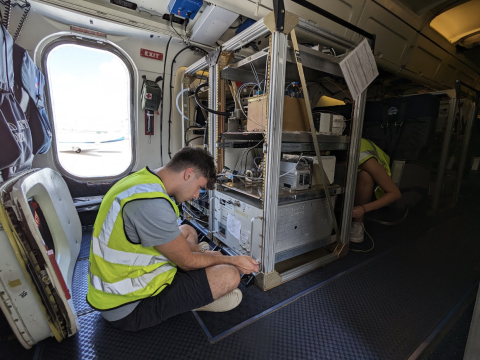Written by Ekaterina Balsan ’25 and Joe Berberich ’24
Faculty-led research opportunities focused on the environment are numerous both in the summer and during the academic year at Colgate. This summer, Ekaterina Balsan ’25 and Joe Berberich ’24 pursued atmospheric chemistry research with Colgate University Professor Anne Perring of the Department of Chemistry.
In collaboration with NOAA and NASA, the students participated in the Atmosphere Emissions and Reactions Observed from Megacities to Marine Areas (AEROMMA) science mission. They worked with the NOAA Single Particle Soot Photometer (SP2) in order to measure black carbon particles (a.k.a. soot) in the air. Black carbon levels in urban areas are particularly interesting as black carbon is a by-product of incomplete combustion from power plants, cars, and more. Black carbon is linked to cardiovascular disease and other negative health effects, which makes understanding the levels in certain areas particularly important for urban air quality.
But how were Ekaterina, Joe, and Professor Perring able to collect measurements from the skies? On a plane, of course.
The SP2 was loaded onto the NASA DC-8, the world’s largest flying laboratory, along with many other scientific instruments, as part of the goal to collect pollutant, chemical, and particulate measurements directly from the air. The plane flew over the Los Angeles basin and surrounding areas in Southern California, Chicago, Detroit, Toronto, and New York City in order to obtain measurements from highly populated urban areas across the United States and Canada.
A day prior to take-off, atmospheric model forecasters determined the flight paths and locations to avoid stormy weather and choose areas with interesting science. The DC-8 flew as high as 30,000 ft. (cruising altitude) and as low as 500 ft. above the ground. At one point, they saw children waving from the Long Island Sound. Ekaterina and Joe participated in fieldwork at two locations. First at the NASA Armstrong Flight Research Center in Palmdale, Calif., and then at the Wright-Patterson Air Force Base in Dayton, Ohio. Between the two of them, they flew more than 30,000 miles on 15 different research flights.
Ekaterina and Joe’s fieldwork included prepping and calibrating the instrument during pre-flight periods, running in-flight tests, and helping with preliminary data analysis. They did everything from crawling on the floor of the plane looking for lost bolts (loose hardware is a major no-no), to thinking of witty puns for mission chat room titles; from preparing presentations to share with the science team, to meeting the Chief Scientist of NOAA. Despite eight-hour flights that started and ended at the same destination, Ekaterina and Joe loved every minute of it. As Joe remarks,
“During the flight, we wore headsets to communicate with other scientists and crew members. The mission director would rattle through a checklist before takeoff. When it was my turn to speak, I would request that the plane ‘hold short’ just before takeoff to calibrate my instrument. As I walked around the cabin, I would see flashing lights and graphs showing off each unique instrument. Everything about the experience felt so professional and exciting.”
For those with ambition in academia, graduate school, or industry, fieldwork experience is highly sought-after. Joe and Ekaterina are tremendously grateful to Professor Anne Perring for accepting them into her summer research group, setting up the opportunity, and securing funding and housing. As Ekaterina explains,
“This opportunity would not have been possible without Professor Perring. She organized travel, housing, and more and enabled us to have a hands-on learning opportunity this summer. To be some of the only undergraduates to be able to work on this mission project is incredible. Professor Perring is a phenomenal mentor, we are so thankful to be a part of her lab!”
Her academic notoriety and connections truly gave these undergraduate students a taste of what being a professional scientist is all about.


